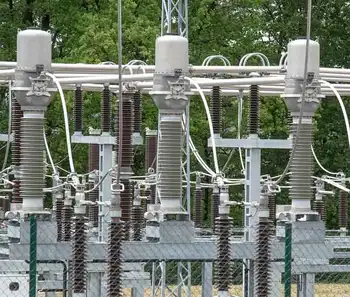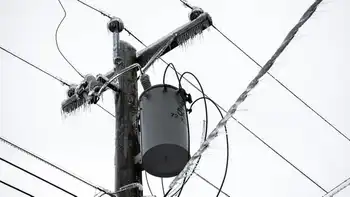Increased Electricity Supply Needed In Ontario
TORONTO -- - Ontario will need to add or replace 15,000 megawatts of generating capacity over the next 15 years — or more than half the current provincial capacity, says the man who runs the power grid.
And we need to decide soon whether some of the new plants should be nuclear powered, Dave Goulding, chief executive of the Independent Electricity Market Operator (IMO), told a conference.
But executives of private sector generators told the same conference that rules must be changed before investors are likely to bet hundreds of millions of dollars on building new generators in the province.
"I think personally, prospects for new generation in this province are poor," said John Brace, executive vice-president of Northland Power Inc. Brace is also president of the Independent Power Producers Society of Ontario.
The comments came a day after the IMO issued a warning that the province was short of power because of frigid weather, and might have to institute rolling blackouts.
Speaking at the Enercom Conference, Goulding said demand for power continues to grow in Ontario, and some generating plants are aging.
"We're going to see inevitably some retirement (of generators), maybe some refurbishment," he said. "But the net of that is, one way or another, we're going to need 15,000 megawatts of new generation."
The province currently has a theoretical generating capacity of about 30,000 megawatts, but at any time some generators are shut down for maintenance.
During the summer, when demand rose above 25,000 megawatts at times, the IMO had to import up to 4,300 megawatts to make up for generators out of service or to bypass bottlenecks in the transmission grid.
Goulding said generating plants powered by natural gas or renewable fuels can't provide all the needed capacity.
"Because of some of the long lead times, particularly with the nuclear option, we need to be starting that debate soon in order to come up with an understanding of what types of fuel might be in that portfolio, including looking at nuclear."
Debate also needs to take place about the shape of Ontario's electricity market, he said. Market participants were shocked last November when the province froze the price of power at 4.3 cents per kilowatt-hour for householders and small businesses.
But a panel of private generators didn't offer yesterday to charge into the market with new plants. Much of the new investment will have to come from the private sector, since provincially owned Ontario Power Generation Inc. must reduce its market share to 35 per cent by 2012; it currently has about 70 per cent.
Brace of Northland offered up a menu of seven conditions needed to induce investment, including stable government policies, a level playing field for all generators, creditworthy power purchasers and an attractive market that gives confidence to financiers.
"At this point in time, Ontario fails in some respect with just about every one of these criteria," Brace said bluntly.
Duncan Hawthorne, chief executive of Bruce Power Inc., warned the province not to extend the price freeze of 4.3 cents to big businesses. Some large businesses have been lobbying for the same deal as consumers, but Hawthorne said that would only discourage investment.
Harry Goldgut, chief executive of Brascan Power, also took aim at the consumer price of 4.3 cents. (In fact, generators get paid the market rate, which has averaged about 5.6 cents since market opening, with the province subsidizing the difference. But generators say the price freeze still acts as a damper on the market.)
The average price needed to attract investment in Ontario is " a lot more than 4.3 cents a kilowatt-hour," Goldgut told the conference.
The price investors want to see is "well north of 6 cents a kilowatt-hour," he said.
Generators need to be able to sell more power under contract, he said — an opinion echoed by many other participants.
Hydro utilities currently can't buy power under fixed-price contracts. Allowing local utilities to buy on contract, the argument goes, would allow generators to sell more of their output at fixed prices. That would reduce the risk to investors, who might otherwise be nervous about the wide price swings on the volatile spot market.
Related News

Can California Manage its Solar Boom?
SAN FRANCISCO - California's remarkable success in adopting solar power has created a unique challenge: managing the infamous "duck curve." This distinctive curve illustrates a growing mismatch between solar electricity generation and the state's energy demands, creating potential problems for grid stability and ultimately threatening to slow California's progress in the fight against climate change.
The Shape of the Problem
The duck curve arises from a combination of high solar energy production during midday hours and surging energy demand in the late afternoon and evening when solar power declines. During peak solar hours, the grid often has an…




